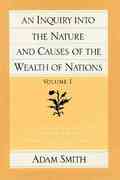Question
review the options for reducing the deficit for removing the cap on interest rates for student loans: When estimating the budgetary effects of proposals to
review the options for reducing the deficit for removing the cap on interest rates for student loans:
When estimating the budgetary effects of proposals to change federal loan programs, the Congressional Budget Office is required by law to use the method established in the Federal Credit Reform Act (FCRA). Under FCRA accounting, projected cash flowsincluding projected flows after 2028are discounted to the present value in the year the loan was taken out using interest rates on Treasury securities. (Present value is a single number that expresses a flow of current and future payments in terms of an equivalent lump sum paid today and that depends on the rate of interest, or discount rate, that is used to translate future cash flows into current dollars.) FCRA accounting, however, does not consider all the risks borne by the government. In particular, it does not consider market riskwhich arises from shifts in macroeconomic conditions, such as productivity and employment, and from changes in expectations about future macroeconomic conditions. The government is exposed to market risk because, when the economy is weak, borrowers default on their debt obligations more frequently, and recoveries from borrowers are lower. Under an alternative method, the fair-value approach, estimates are based on market valuesmarket prices when they are available, or approximations of market prices when they are notwhich better account for the risk that the government takes on. As a result, the discount rates used to calculate the present value of higher loan repayments under the option are higher for fair-value estimates than for FCRA estimates, and the savings from those higher repayments are correspondingly lower.
According to the FCRA method, eliminating the cap only on loans to graduate students and parents would reduce projected spending by $11 billion from 2019 to 2028, CBO estimates. According to the fair-value method, projected spending would decline by $8 billion.
According to the FCRA method, eliminating the cap on all federal student loans would reduce projected spending by $16 billion from 2019 to 2028. According to the fair-value method, projected spending would decline by $12 billion.
Both alternatives are projected to lower spending because there is some possibility that the interest rate caps could bind under current law, even though that outcome does not occur in CBO's 10-year economic projections. In other words, the estimates take into account the possibility that interest rates will be higher than expected. CBO estimates a range of possible outcomes for borrower interest rates using statistical techniques designed to capture the effects of volatility in interest rates. Specifically, such estimates are based on Monte Carlo simulations, a technique based on statistical inference regarding the uncertainty in estimates and projections of economic variables. That technique allows CBO to account for the probability in each year that the 10-year Treasury note rate will be high enough for the caps to be in effect.
Uncertainty around the possible outcomes for future interest rates is one key factor that makes the estimates of the two alternatives uncertain. Underlying the estimates is the probability that the Treasury rate will be high enough for student loan rates to be capped, which is based on CBO's April 2018 forecast of the Treasury rate. A greater probability of higher Treasury rates would increase the probability that the caps would bind. As a result, the estimated savings from this option would also increase. Likewise, a smaller probability of higher Treasury rates would decrease the probability that the caps would bind and, thus, the estimated savings would decrea
and alsofor tightening the eligibility for the supplemental nutrition assistance program:
This option would eliminate broad-based categorical eligibility for the Supplemental Nutrition Assistance Program (SNAP) for some households. Specifically, for households that do not include an elderly or disabled person and are eligible for SNAP under current law because all household members receive or are authorized to receive noncash benefits from the Temporary Assistance for Needy Families (TANF) program, eligibility for SNAP would instead be determined through income and asset requirements. CBO estimates that the option would yield federal savings of $8.1 billion from 2019 to 2028. The largest source of uncertainty in that estimate is CBO's estimate of the number of participants who would be affected by the option. To estimate that number, CBO relies on administrative data that include detailed information about participants' income but do not generally include information about their assets. As a result, determining precisely how many people would remain eligible for SNAP if they were subject to the asset requirements is difficult.
provide an explanation and synthesis of the potential impacts on the US economy tied to these austerity measures including sectors of the economy that would be affected.
Step by Step Solution
There are 3 Steps involved in it
Step: 1

Get Instant Access to Expert-Tailored Solutions
See step-by-step solutions with expert insights and AI powered tools for academic success
Step: 2

Step: 3

Ace Your Homework with AI
Get the answers you need in no time with our AI-driven, step-by-step assistance
Get Started


